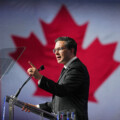Karen MacNeil is one of the big guns of American wine writing, so when she posted an Instagram video in late December proclaiming not only that she hated the idea of Dry January, but that promoting it struck her as “self-righteous and puritanical” and “the first baby step towards another Prohibition” people took notice. To be fair to MacNeil, she pointed her critique at the wine industry, which she believes should focus more energy on promoting what she sees as the benefits of drinking wine in moderation.
MacNeil’s animus towards the month-long abstention from alcohol notwithstanding, the general consensus among wine writers I’ve read on both sides of the pond this year is marked ambivalence. We generally don’t like to be told not to drink but, by the logic of the Golden Rule, we are all loathe to tell anyone who decides they might like to take a break that they shouldn’t either.
Also, the truth is that anyone who writes about wine professionally can’t really take a month off tasting. I suppose if one was religious about spitting, that might count. Although that seems like a set-up for a worse torture than mere abstinence. What if I had the most exquisite mouthful of a rare wine on my cheeks?
The party line in the wino media is: we don’t do Dry January, but we do do Damp January. Google it, and you’ll see what I mean. There are all kinds of justifications for it, and all kinds of tips and tricks on how to do it. I weigh in below, and I promise you there will be no mocktails.
Of course, the real beauty of Damp January is that you probably don’t really have to expend any actual effort to achieve at least a mild Damp January. In fact, I am pretty sure that, unless you were in hospital for the last thirty days, it would actually require an almost Herculean effort and stamina to drink more alcohol by volume and frequency in the first month of the year than the last.
Like any natural process, though, Damp January can be helped along. Here are three strategies to further reduce the mass of alcohol molecules circulating around the body between now and the end of January—or whenever you’d like. Like this column generally, they are designed to minimize pain and maximize pleasure.
Drop the numbers
Once on a trip of Canadian wine writers in Châteauneuf-du-Pape, a producer of renown turned the tables on us and asked a question. Why were North American journalists so hung up on alcohol by volume? Sure, he made wines that were regularly comprised of 15 percent or even more alcohol. But, he reasoned, if you only have a glass, that’s just a 3 percent difference from a Burgundy at 12 percent.
None of us had the courage to reply for fear of looking like barbarian drunkards. The trouble, we silently thought, is that sometimes one would like more than one glass, and in that case, a few points of variance on a wine’s “abv” can make a noticeable difference, especially on one’s demeanour the next day. A strategy to achieve Damp January without a drastic reduction in consumption could be to only drink wines with a low level of alcohol.
Unfortunately, there are three obstacles to this strategy. First, alcohol in wine is made from the fermentation of the sugar in the grape. Wines that show low alcohol levels can often be relatively high in “residual sugar” left behind when fermentation is stopped. Switching one vice for another seems counterproductive.
The second obstacle is related. Global warming means that it is increasingly difficult to find dry wines made anywhere in the traditional wine-making parts of the world with an abv under 13 percent. Even then, most regulatory regimes will let producers put an abv on the level within half or one percent of the actual lab result. So that 13 percent, might well be more like 13.5 percent or 13.9 percent.
The third obstacle is price. The sorts of places that naturally produce lower alcohol wines are cold, like Canada or high altitude sites, and expensive to make wine in. Again this seems counterproductive since one of the supposed benefits of Damp January is to save money, though the next strategy might address this.
Spend twice, drink half
When my wife was pregnant with our first child, I adopted a version of this strategy. Reasoning that since the number of wine drinkers in our house had temporarily diminished by 50 percent, I could afford to drink bottles twice the price of the ones we usually did without affecting the overall household budget. It didn’t work out well.
Or, perhaps I should say, it worked out too well. I had to abandon the project since it turns out it’s more difficult for me to put the cork back into a really tasty bottle of wine. That’s OK on Friday but not great on Tuesday night. My personal consumption began to make up for the deficit of my wife’s abstinence.
This strategy only works if you have the willpower to resist another glass of very fine wine, or can somehow get someone to tie you to a metaphorical mast. But in that case, it would be a pleasant way to move through the long month.

Take it to the table
Wine cultures are food cultures. In the parts of Mediterranean Europe where the tradition of making wine is long and strong, it is rarely consumed outside of a meal. As the French say: “wine is food.” The third strategy towards a Damp January is to stop drinking wine and only eat it.
Caveat: this strategy won’t work if you start having wine with every meal. A glass of Prosecco might be pleasant at breakfast on holiday, but it makes for a tiring workday. Even then, there is the danger that you could find yourself cooking and serving long multi-course dinners throughout the week. This might not work out for your waistline, but your family and friends will likely enjoy it. Tell them to bring a bottle to the table. There are worse ways to put a little warmth and light into a cold and dark Canadian winter’s night.
Recommended for You

Malcolm Jolley: Cool Chardonnays for warm days

Malcolm Jolley: The LCBO strike was a spectacular misstep

Malcolm Jolley: Doug Ford is right. The LCBO has long outlived its purpose

Malcolm Jolley: What is rosé anyway?











